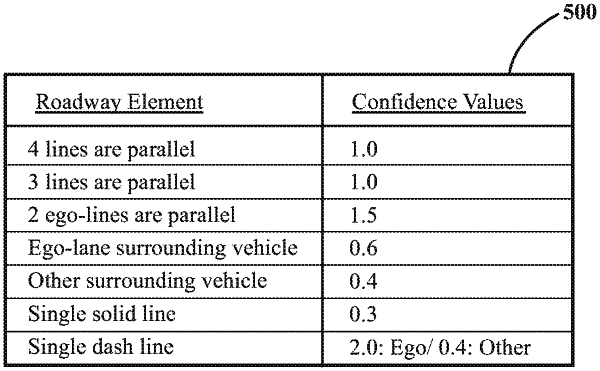| CPC B60W 30/12 (2013.01) [B60W 60/0027 (2020.02); G01C 21/3407 (2013.01); G01C 21/3815 (2020.08); G06V 20/588 (2022.01); H04Q 9/00 (2013.01); B60W 2552/53 (2020.02); B60W 2555/00 (2020.02)] | 20 Claims |

|
1. A tracking system for improving identification of a path for an ego vehicle on a roadway, comprising:
one or more processors;
a memory communicably coupled to the one or more processors and storing:
a sensor module including instructions that when executed by the one or more processors cause the one or more processors to, in response to acquiring sensor data from at least one sensor of the ego vehicle about a surrounding environment, identify roadway elements from the sensor data as cues about the path, wherein the roadway elements include lane markers of the roadway and trajectories of one or more surrounding vehicles with combinations of individual lane markers as single roadway elements with the lane markers across multiple separate lanes defining a single element; and
a target module including instructions that when executed by the one or more processors cause the one or more processors to group the roadway elements into two or more groups that are separately parallel according to characteristics of the lane markers and the trajectories of the one or more surrounding vehicles indicating parallelism using a clustering algorithm,
wherein the target module includes instructions to analyze the two or more groups according to a confidence heuristic by calculating priority metrics for each of the groups including assigning weights to the roadway elements, including weights for sets of lane lines of multiple lanes, to determine a priority group from the two or more groups that corresponds with a trajectory of the ego vehicle as an indicator of being parallel with a path of the ego vehicle, and
wherein the target module includes instructions to cause the ego vehicle to plan the path using the roadway elements of the priority group as an indicator about environmental cues that are parallel to a direction of the path and controlling the ego vehicle to follow the path.
|